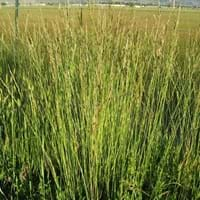Life Span
Perennial
Perennial
Origin
Hybrid origin
Southern Asia, Southeastern Asia, India, China, Melanesia, Australia
Types
Alta fescue, Kentucky fescue
Ceiba casearia, Bombax pentandrum
Habitat
meadows, Well Drained, yards
Tropical regions
USDA Hardiness Zone
5-8
9-15
Sunset Zone
A1, A2, A3, 1a, 1b, 2a, 2b, 3a, 3b, 4, 5, 6, 7, 8, 9, 10, 14, 15, 16, 17, 18, 19, 20, 21, 22, 23, 24
H1, H2, 20, 21, 22, 23, 24
Habit
Clump-Forming
Oval or Rounded
Minimum Width
Not Available
Flower Color
Pale White
Red, Orange Red
Flower Color Modifier
Bicolor
Bicolor
Fruit Color
Non Fruiting Plant
Brown
Leaf Color in Spring
Blue Green
Green
Leaf Color in Summer
Light Green
Green
Leaf Color in Fall
Blue Green
Green
Leaf Color in Winter
Green, Tan
Not Available
Leaf Shape
Grass like
Palmate
Plant Season
Spring, Fall
Spring, Summer, Fall, Winter
Sunlight
Full Sun, Partial Sun
Full Sun
Type of Soil
Clay, Loam
Loam, Sand
The pH of Soil
Neutral, Alkaline
Acidic, Neutral
Soil Drainage
Average
Well drained
Bloom Time
Not Available
Early Spring, Late Winter
Tolerances
Not Available
Drought
Where to Plant?
Ground
Ground
How to Plant?
Seedlings, vegetative cuttings
Seedlings
Plant Maintenance
Medium
Medium
Watering Requirements
Allow to dry out slightly between watering, Never Over-water
Average Water Needs
In Summer
Lots of watering
Moderate
In Spring
Moderate
Moderate
In Winter
Average Water
Average Water
Soil pH
Neutral, Alkaline
Acidic, Neutral
Soil Type
Clay, Loam
Loam, Sand
Soil Drainage Capacity
Average
Well drained
Sun Exposure
Full Sun, Partial Sun
Full Sun
Pruning
Prune after flowering, Prune for size control, Remove dead or diseased plant parts
Prune when young, Remove dead branches
Fertilizers
All-Purpose Liquid Fertilizer
Nitrogen
Pests and Diseases
Brown patch, Gray leaf blight, Pythium blight, Rust, Zoysia patch
Bacterial leaf spot, Red blotch, Root rot
Plant Tolerance
Full Sun, Heat And Humidity
Drought, Soil Compaction
Flowers
Insignificant
Showy
Flower Petal Number
Single
Single
Foliage Texture
Medium
Coarse
Foliage Sheen
Matte
Glossy
Attracts
Mealybugs, Mites
Bees, Birds, Hummingbirds
Allergy
Skin rash, Vomiting, Watery eyes
Headache, Pulmonary oedema, Respiratory distress, wheezing
Aesthetic Uses
Ground Cover, Used in parkland
Not Used For Aesthetic Purpose
Beauty Benefits
Not Available
Improve skin tone, Making cosmetics, Moisturizing, Skin irritation
Environmental Uses
Fixes Nitrogen, Prevent Soil Erosion
No fertilizer, pesticides, or herbicides needed, Prevent Soil Erosion, soil stabilisation
Medicinal Uses
Antispasmodic
Aphrodisiac, Diuretic
Part of Plant Used
Whole plant
Leaves, Seeds
Other Uses
Animal Feed, Used as Ornamental plant
Oil is used as an industrial solvent, Used as Ornamental plant
Used As Indoor Plant
No
No
Used As Outdoor Plant
Yes
Yes
Garden Design
Groundcover, Lawns and Turf
Feature Plant, Shade Trees, Tropical
Botanical Name
Festuca arundinacea
Ceiba pentandra
Common Name
Tall Fescue
Cotton Tree, Red Kapok, Red-silk-cotton Tree
In Hindi
tall fescue
सफ़ेद सेमल / शाल्मली
In German
Rohr-Schwingel
Kapok baum
In French
Festuca arundinacea
Fromager
In Spanish
Festuca arundinacea
Ceiba
In Greek
tall fescue
Ceiba
In Portuguese
Festuca arundinacea
Mafumeira
In Polish
Kostrzewa trzcinowa
Puchowiec pięciopręcikowy
In Latin
tall fescue
Ceiba
Phylum
Magnoliophyta
Magnoliophyta
Class
Liliopsida
Magnoliopsida
Family
Poaceae
Bombacaceae
Clade
Angiosperms, Commelinids, Monocots
Eudicots, Rosids
Tribe
Not Available
Not Available
Subfamily
Not Available
Not Available
Number of Species
Not Available
Season and Care of Tall Fescue and Kapok
Season and care of Tall Fescue and Kapok is important to know. While considering everything about Tall Fescue and Kapok Care, growing season is an essential factor. Tall Fescue season is Spring and Fall and Kapok season is Spring and Fall. The type of soil for Tall Fescue is Clay, Loam and for Kapok is Loam, Sand while the PH of soil for Tall Fescue is Neutral, Alkaline and for Kapok is Acidic, Neutral.
Tall Fescue and Kapok Physical Information
Tall Fescue and Kapok physical information is very important for comparison. Tall Fescue height is 5.10 cm and width Not Available whereas Kapok height is 1,830.00 cm and width 1,830.00 cm. The color specification of Tall Fescue and Kapok are as follows:
Tall Fescue flower color: Pale White
Tall Fescue leaf color: Blue Green
Kapok flower color: Red and Orange Red
- Kapok leaf color: Green
Care of Tall Fescue and Kapok
Care of Tall Fescue and Kapok include pruning, fertilizers, watering etc. Tall Fescue pruning is done Prune after flowering, Prune for size control and Remove dead or diseased plant parts and Kapok pruning is done Prune when young and Remove dead branches. In summer Tall Fescue needs Lots of watering and in winter, it needs Average Water. Whereas, in summer Kapok needs Moderate and in winter, it needs Average Water.





